Resources

Those of you with kids, or those of you who have simply been spending way too much time on your Netflix account since the pandemic began (no judgement!), may have heard of the movie called Yes Day, released in 2021 and starring Jennifer Garner. The premise of this film, based upon a book of the same name, is simple: “A sunny family of five agrees to a day where a mother and father must consent to whatever the kids want in this broad Netflix comedy” (NY Times review). The parents will say “yes” to their kids’ wildest requests (after a few ground rules have been established) for a whole day—a welcome reprieve to a life normally filled with “no.” As a parent myself, I find it an interesting, if not somewhat terrifying, idea. As an educator, I am reminded of a more serious possibility, one that Margaret Price, who is an OSU English professor, disability studies scholar, and author of the book Mad at School, raised in a recent talk. In “Everyday Survival and Collective Accountability,” Price shares the experience (recounted to her in a research interview) of an instructor with a disability who needs the temperature of her classroom to be less than 80 degrees or she experiences numbness, dizziness, nausea, and eventually, fainting and seizures. One day, this instructor arrived to find her classroom “stiflingly hot.” Fortunately, she was able to find the building manager and asked him to turn the temperature down. And “the building manager just did it,” which surprised Price. She goes on: The thing that really struck me about this story is how simple the actions required were, and how incredible, how incredibly rare it is to have someone simply believe you when you say “Hey, I need something.” This is an interesting thought experiment to practice if you want to kind of try out one of these over the next few days. Stay alert for expressions of need that might be shared with you and imagine what would happen if you simply said “Okay,” instead of saying, “Well, why do you need to miss class?” or “Why is that the particular software that you need,” or “Say more about why this would be the optimal decision.” And, again, I’m not saying we all should, like, this is not a radical “yes to everything” improv kind of proposition. I’m much too uptight for that. It’s more of just a thought experiment. What would happen if someone told you they needed something, and you just said, “I believe you”? Many of us academics are trained in a “hermeneutics of suspicion.” We are known for our sharp critical thinking skills. We are taught to interrogate, to question, to analyze, to require evidence. Being humble is hard for us. Jumping quickly to critique is much more comfortable. But do these dispositions, these impulses, these habits, interfere with our ability to believe, to empathize, to care—to recognize the real, complex, imperfect human beings in front of us? Who is harmed when we are skeptical or distrustful? Who do we alienate or exclude? Who refrains from coming to us, from sharing their stories with us, from asking us for our help? While Price was focusing on faculty with disabilities in her talk because this is the population she studies (and identifies with), the same point could be made about colleagues of ours with other identity markers, and also about the students in our—virtual or in-person—religion courses. Higher education creates barriers and inhospitable conditions for many students—a veritable landscape of “nope” for far too many. The disclosure process for students with disabilities, for example, can be expensive, cumbersome, intimidating, embarrassing, and, sometimes, just not worth it. First-generation students have a heck of a time figuring out the “hidden curriculum.” Students of color face “stereotype threat” and have to worry about a “sense of belonging,” not to mention more serious issues. Despite advances from movements like #metoo, women still don’t come forward to report experiences of sexual harassment and assault because of a fear of not being believed, a fear of having to “prove” the trauma and relive it all over again, a fear of backlash and negative consequences. And, of course, identities intersect and experiences of marginalization, discrimination, microaggression, and oppression compound. I have heard these stories, and more, from undergraduates in my own religion courses, even at a university that ostensibly cares about “diversity.” In many ways, our educational institutions are like life as usual for the family in Yes Day. Yet I imagine a different way—a more open and charitable and flexible orientation—would be especially beneficial for these students, while, of course, benefiting everyone. A few weeks ago, I checked in with my students in my upper-level race and religion seminar—something I like to do every so often, in class or online, to express care. I asked, simply, “How are you doing?” The biggest (i.e., most common) responses in the word cloud were “tired” and “stressed.” Students are exhausted, overwhelmed, and anxious (like a lot of faculty I know!). Even worse, though, was that they told me I am the only one of their professors asking how they are doing, asking what I can do to help them. All semester long, students have contacted me about missing class because they’re sick or attending funerals, asking if they can leave early for doctors’ appointments or job interviews, turning in the wrong kind of assignment because they misunderstood the instructions, and more. The Emily of two years ago would have found these requests exasperating, eyeroll-inducing. Excuses! Mediocrity! Laziness! Entitlement! The pandemic has radically shifted my thinking about these moments. I hope this lesson remains with me. What if we simply believed our students (not to mention our colleagues)? What if we simply cared about them, first and foremost, as human beings? What if we didn’t require doctor’s notes or other forms of evidence to make them have to work to prove they’re having a hard time, on top of the hard time they’re already having? What if we just granted deadline extensions, what if we just allowed re-do’s, what if just we cancelled class when it was obvious that everyone needed a break? What if we conveyed, in a wide variety of ways, that we trust them, that we recognize their lives are hard (right now, sure, but also, for some students, all the time), that we value them? What if we said “yes” to them—not for a day, as in the movie, but every day, for a semester, all the time, as a matter of default or principle? To be sure, Yes Day is fictional and its antics seem to have resulted in “cartoon-style chaos” and, at best, lukewarm critical reception. And, of course, when applied to the college classroom, we may have considerations and worries that go beyond glitter-filled Mom makeovers (e.g., but what about our beloved “rigor”?) Like Price, however, I encourage us to engage in the thought experiment, even if just for fun. What could a “yes” approach look or feel like in our religion classrooms? What possibilities exist? How could it improve the learning experience, especially of those from underserved populations? How could it transform our interactions with students, our teaching, our own experiences as an instructor?
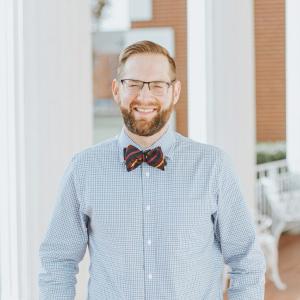
The COVID-19 pandemic has had untold impacts on our shared work of teaching and formation. For those whose institutions have continued in-person instruction, no matter the degree of precaution taken, the risks of transmission have added fear, stress, and uncertainty to teaching contexts that already include significant challenges (which I need not enumerate here). Our challenging circumstances have also provided unique opportunities, though. And many have responded with admirable flexibility and resiliency. I have heard inspiring stories from friends and colleagues who have been able to facilitate safe learning and are sometimes even thriving, within the constraints and possibilities of our specific situations. I always have butterflies when a new school year begins, but in August of 2020 I felt paralyzed. How could I ensure that I was doing everything I could to keep my students safe while also facilitating the possibility of learning and growth within the unique stressors of the moment? I decided that, as long as I could ensure accessibility, all of my classes would meet outside, weather-permitting, as often as possible. In this first blog (of three), I will introduce the practice of outdoor teaching and reflect on its significance for theological education in our current circumstances. Two subsequent blogs will explore significant experiences and takeaways from my own outdoor instruction since August of 2020.[1] As I noted above, my fundamental motivation for outdoor teaching was to ensure a safe learning space. To be sure, walls and a ceiling offer safety and protection from the elements. When indoor spaces become places of more significant risk, though, we can experience what is normally protective as oppressive. The masks and distancing required for safety in enclosed spaces also raised literal barriers to communication and to nurturing the sense of community which I strive to facilitate for my students. Meeting outdoors allowed us all to breathe more freely, and in turn, to communicate and cultivate community more intentionally and with greater effect than would have been possible behind masks, socially distanced, and wary of the threat of a pathogen spread much more easily in enclosed spaces. Outdoor education has a long and storied history. While it has not always been adequately inclusive in western contexts, indigenous peoples have long emphasized the importance of learning within, and from, places of inhabitance. Our current climate crises demand that educators in theology and religious studies intentionally practice and foster connections with our more-than-human natural world for the sake of its well-being and for the sake of our own survival. Such intentionality is a matter of spiritual, religious, and moral concern for me as a Christian theologian. Though I have yet to teach a course directly on issues of creation care, teaching outside has already provided me with countless opportunities to connect my students to the natural world. Aside from providing an occasion to help meet the exigencies of responsible stewardship and living justly in creation, I have found that outdoor teaching is profoundly humane. Our built environments have the potential to make us forgetful of our dependence, contingency, and even capacities for embodied learning. However, as Jennifer Ayres writes, “When learners are invited outside the four-walled classroom, . . . their sensory experience of nature, particularly when paired with caring mentors who can accompany the learners as they make sense of their experience, can be transformative.”[2] When we resumed face-to-face instruction in the fall of 2020, I told my students that I suspected that our shared work together during the 2020-2021 school year would likely make for the most challenging and most poignant year of their educational journey. It was certainly the most difficult and most transformative school year yet for me. Teaching outdoors has provided me countless opportunities to reassess and improve my abilities to empower and instruct my students, to discover and promote cross-curricular and intellectual, moral, and practical connections, to appreciate the privilege of the work that I am able to do, and to marvel at and encourage the courage, attentiveness, resiliency, and creativity of my students. Though the uncertainty of the pandemic continues—I write these words just days after the discovery of the Omicron variant—because of the countless benefits both I and my students have experienced in classrooms without walls, I cannot imagine going back inside again full-time. I will be relieved if and when we are all able to breathe, speak, and listen more freely indoors, but all of my future teaching will include the fresh air of my classroom without walls. [1] I am grateful for the opportunity to share what I have learned in the hopes that others might benefit. That said, I must acknowledge that the privileges of my embodiment (as a cisgender white male) and my institutional circumstances (a campus with infrastructure amenable to outdoor instruction) mean that what I have been able to do may not be possible for others. Even so, the experience of meeting outside has reminded me of things I had forgotten and taught me new things about pedagogy that are worthy of consideration, even for those unable to teach outside. [2] Jennifer R. Ayres, Inhabitance: Ecological Religious Education (Waco, TX: Baylor University Press, 2019), 76.
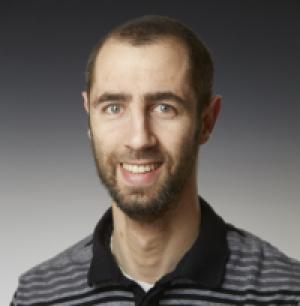
Since Trump became a candidate in the 2016 US presidential race, educators have continued to reflect on how his political presence might influence pedagogy. Personally, I find myself in a familiar quagmire: to what extent do I focus on current events in my Islamic studies courses? If I wanted to, each class session could devote itself exclusively to political developments, domestic and international; this has been the case for years. Trump’s incendiary comments, policy moves, and cabinet picks who malign Muslims, exacerbate this quagmire. Trump, for example, said that “Islam hates us” in a March 2016 interview with CNN’s Anderson Cooper. His cabinet picks and advisors have endorsed similarly disturbing, perhaps willfully ignorant, positions and rhetoric. In this blog post, I will discuss some strategies, as well challenges, for how Islamic studies teachers might react to a Trump administration in a classroom context, with special attention to building positive narratives in addition to challenging existing ones. A recent Executive Order bans travel to the US from nationals of several Muslim-majority countries. In the language of The Intercept’s Zaid Jilani, “If we bombed you, we ban you.” As students, professors, and researchers—even those with green cards—find themselves in limbo, the EO has already sent reverberations across the lives of Muslims in the US and abroad. Fortunately, many scholars of Islam remain positively engaged in public discourse and efforts toward bridge-building and political problem-solving on an ongoing basis. Ilyse Morgenstein-Fuerst wrote a blog post for the University of Vermont, “Trump 2016: The View from Islamic Studies,” in which she details the connections between Trump’s rhetoric, cabinet choices, and their consequences. Caleb Elfenbein, an author for this “Teaching Islam” blog, has contributed to an important project that maps anti-Muslim crimes in the US. Also chilling is Mohammad Fadel’s article for The Islamic Monthly that details worst-case scenarios for Muslims under a Trump administration, including comparisons with Japanese internment camps. This is all to say that there are simply too many, individual as well as cumulative, momentous and worrisome news headlines to introduce to an undergraduate Islamic studies course while still covering other material in the course. Are the Challenges (that) Different than Before? Effective pedagogy includes understanding one’s context, including institutional goals, student demographics, and the current political landscape. An effective way, I find, to invite students to draw personally meaningful connections to course material is to always keep in mind popular symbols and ideas that bear, even indirectly, on what we study. The absurdity of mainstream media coverage of Islam can also offer some cathartic moments of laughter, which also helps ease students into challenging discourses. In terms of noteworthy contributions that Muslims make to American public life, we saw Linda Sarsour—a Palestinian American activist—lead organizing efforts for the Women’s March on Washington. Keith Ellison, the first Muslim member of Congress (now in his sixth term), received the endorsement of Bernie Sanders for chair of the DNC, and the funeral of Muhammad Ali in June 2016 attracted international media attention, including its full broadcast on Fox News. In a beautifully narrated but also depressing account, NPR’s Asma Khaled details what it was like, as a Muslim woman, to cover Trump’s campaign during the election. As Amir Hussain adroitly argues in his recent book, Muslims and the Making of America (Baylor, 2016), we have much to learn about American cultural fabric by studying the role of Islam and Muslims in our history, even as it continues to unfold. In my capacity as host for New Books in Islamic Studies podcasts, I have interviewed a number of scholars—including Amir Hussain, Sophia Arjana, and Todd Green—about how current political affairs impact the lives of Muslims in the US. I keep my students in mind as one audience for these interviews, and I have repeatedly assigned my students the interview I conducted with Todd Green, on Islamophobia (which prospered in the American mainstream long before Trump reached the national spotlight). The Good, the Bad, and the Mystical Despite the many humanizing accounts about Muslims that my students study, these same students also tell me that they aren’t surprised to learn about the pervasive Islamophobia in the news cycle. But don’t some details shock them, even a little bit? In a 2015 Public Policy Poll, for example, about 30% of Republicans and 19% of Americans supported bombing Agrabah—the fictional city from Disney’s Aladdin. Among Trump supporters: 41%. As I wrote in a previous “Teaching Islam” blog post, students can use current political tensions, and how they respond to them, as a way to make sense of Sufi conceptions of spiritual growth. “Do I,” students might ask themselves, “harbor anything related to these views that I find so toxic and ignorant?” I’m currently teaching Islamic Mysticism for the third time, and I’ve implicitly chosen in past iterations to focus less on current events than I do in my introductory courses on Islam, or even in my courses on the Qur’an in which we explicitly explore contentious political topics. This time, however, I find myself taking closer stock during class time of political context, and not only because of the most recent presidential election. I think students likewise crave a balance between attention to (depressing) current events and engaging with aesthetics and intellectual discourse that don’t immediately relate to the latest fake news (or “alternative facts”?) on their social media feeds. In conclusion, I would like to include a brief reflection on student activism and its connection to teaching. As a graduate student at UC Santa Barbara, I witnessed some student groups host anti-Muslim ideologues including Dennis Praeger, David Horowitz, and Daniel Pipes. Frequently, I would watch many other student groups respond with formal protests, which I found both heartening and problematic. Indeed, protest is perhaps part of the human spirit; it encapsulates much of what it means to thrive in a democratic society. It’s also an effective catalyst for change as numerous examples from history attest. At the same time, however, I regularly remind myself that part of the difficult intellectual work of teaching and learning involves building narratives, not only challenging visible narratives. Both are necessary, and my course on Sufism helps me, and I hope my students as well, appreciate the significance of this balance, the complementarity between jamal (beauty) and jalal (majesty)—two sides of the same human condition. Where do you strike your balance in terms of navigating planned course material with course-related current events as they arise throughout the term? Please share in the comments section.

Cláudio Carvalhaes Associate Professor McCormick Theological Seminary In Brazil We who believe in freedom cannot rest We who believe in freedom cannot rest until it comes. (1) We have had a month of intense events in the US. The killings of Black precious people, this time, Philando Castile and Alton...
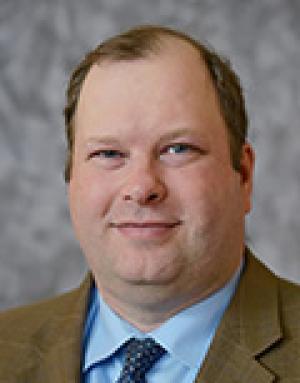
Derek Nelson Associate Professor of Religion Wabash College On February 17 the Wabash community got word that police were on the campus looking for a suspect in a double murder. As it turned out, the suspect was an employee. He had taken a college van, and later ended his life

At a gathering of theological school deans one activity had the deans share the job descriptions from each of their schools. This group of deans was from a variety of contexts: different geographic regions, various denominations, free-standing and university-embedded schools,...
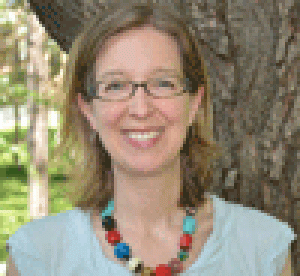
Kate Blanchard Readers, you should close this page right now and not heed another word I say about teaching. The past couple of weeks – despite the fact that one of those weeks was our winter break – I’ve been so utterly preoccupied with a motley collection of issues that...
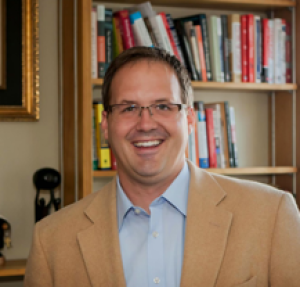
Kyle J. A. Small, Ph.D. Associate Academic Dean and Associate Professor for Church Leadership Western Theological Seminary The faculty at Western Theological Seminary (WTS) in Holland, MI recently invested itself in Willie James Jennings’ book, The Christian Imagination: Theology and the Origins of Race (Yale University Press, 2010). Three faculty members were invited to take up Jennings' claim and call, and to generate a conversation in terms of how Jennings’ work intersects with our shared task of teaching and learning. I engaged as a pastoral theologian wondering what are the pedagogical implications if we accept Jennings' book, on his own...
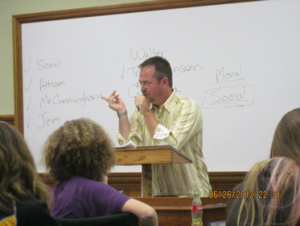
Greg Carey, Professor of New Testament at Lancaster Theological Seminary We all know that our students’ social and religious contexts shape the way they understand the Bible – in theory, at least. But how do we bring that knowledge into...
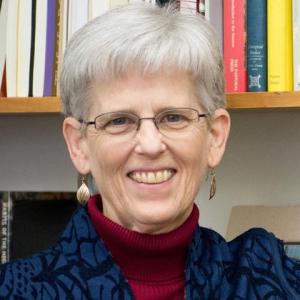
Rebecca Slough Associated Mennonite Biblical Seminary When some members of the first Deans Colloquy group were together this past January, we spent a part of one day reviewing basic principles of systems theory. Two themes, in particular, that we discussed...